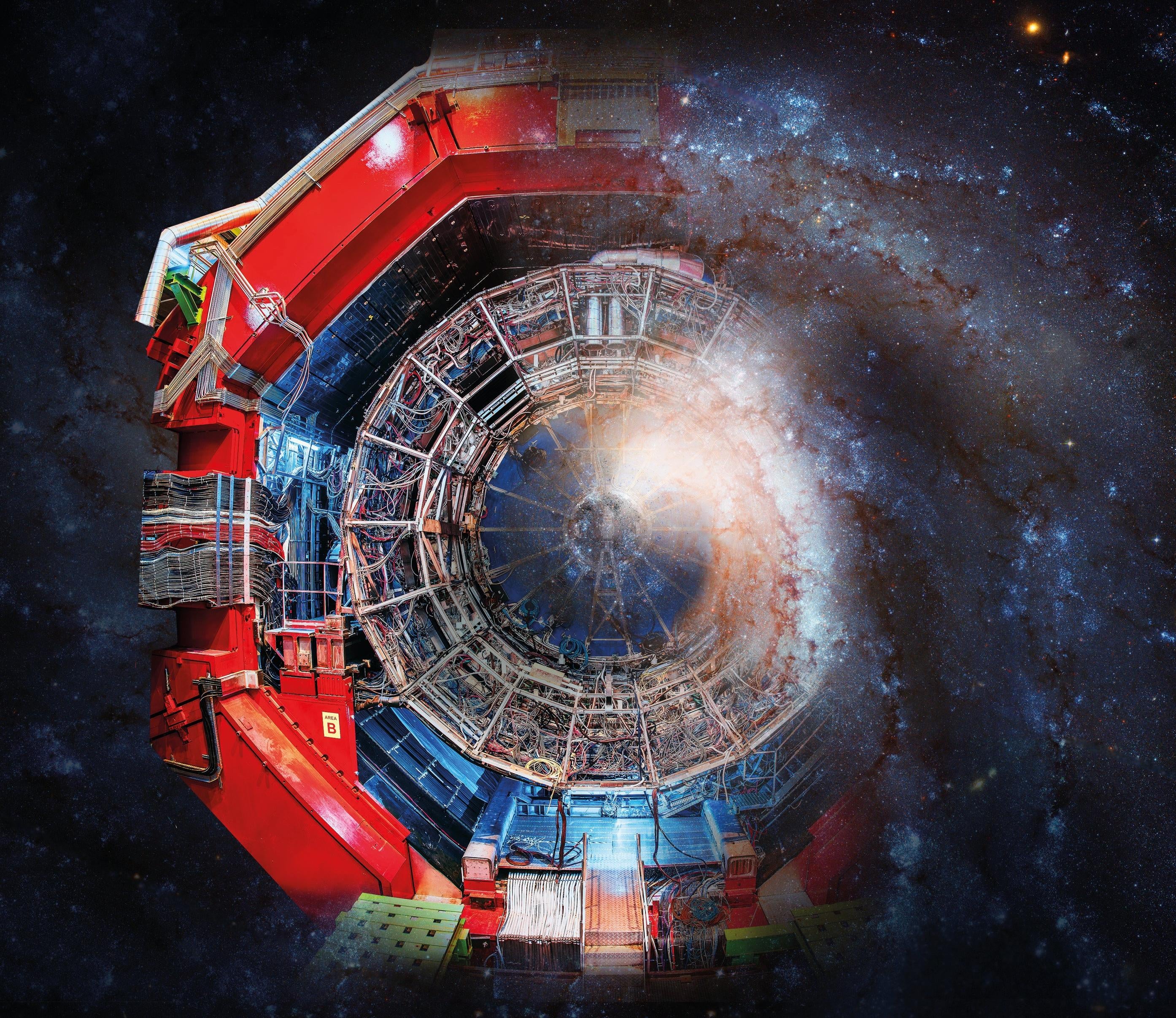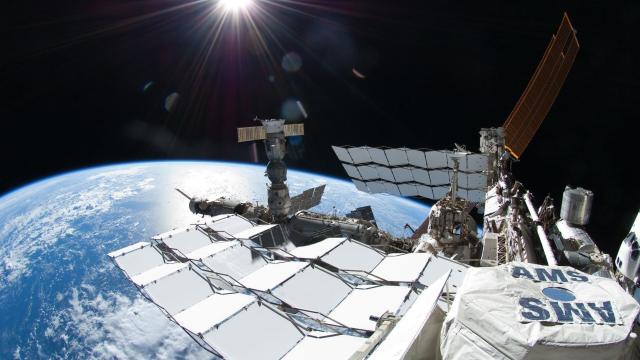A team of physicists determined that enigmatic ‘antinuclei’ can travel across the universe without being absorbed by the interstellar medium. The finding suggests we may be able to identify antimatter that is produced by dark matter in deep space.
The physicists estimated the Milky Way’s so-called transparency to antihelium-3 nuclei — meaning, how permissive the galaxy’s interstellar medium is to antinuclei zipping through space.
“Our results show, for the first time on the basis of a direct absorption measurement, that antihelium-3 nuclei coming from as far as the centre of our Galaxy can reach near-Earth locations,” said ALICE physics coordinator Andrea Dainese, in a CERN release.
Antimatter is not merely the stuff of sci-fi novels. It is a real, naturally occurring mirror to ordinary matter. Antimatter particles have the same mass but the opposite charges of their ordinary counterparts. Where electrons have a negative charge, their antimatter analogues, positrons, have a positive charge. Protons’ antimatter partners are the more simply named antiprotons.
This principle can be scaled up to the atomic level: Every atom has a nucleus — a core of protons and neutrons glommed together — but there are also antinuclei, composed of antiprotons and antineutrons. We know these exist because they were discovered in an experiment in 1965, when physicists observed antideuterons (the antimatter version of the deuterium atom) in a lab.
The universe rocked into being 14 billion years ago, with a Big Bang that in theory should have created equal amounts of matter and antimatter. But look around you, or at the latest Webb telescope images: We live in a universe dominated by matter. An outstanding question in physics is what happened to all the antimatter.
The recent research team — a large, international collaboration of physicists — worked with the ALICE detector at CERN’s Large Hadron Collider, beneath the ground near St Genis-Pouilly, France, to try to get a step closer to spotting the mysterious stuff.
ALICE (A Large Ion Collider Experiment) is an 9,979 T detector that investigates collisions between heavy ions and other particles, which allows physicists to probe some of the smallest, primordial, and most exotic masses in our universe.
In the recent experiment, the ALICE Collaboration attempted to measure the rate at which antihelium-3 nuclei (isotopes of helium’s antimatter counterpart) disappeared when they encountered ordinary matter. Their research is published in Nature Physics.

The study is not as much about the remarkable distances the antimatter particles can travel but “how many of the produced antihelium-3 would reach the detectors,” said study-co-author Laura Šerkšnytė, a physicist at Technische Universität Munchen and a member of the ALICE Collaboration, in an email to Gizmodo.
In other words, the team’s research is a helpful indicator that cosmic antinuclei detectors, like the AMS experiment aboard the International Space Station and the upcoming GAPS balloon experiment in Antarctica, will have a fair chance at finding the vexing particles.
There are a few candidates for natural antinuclei sources in the universe; one is high-energy cosmic ray collisions with atoms in the interstellar medium, the stuff that occupies the space between stars. Another candidate — a core component of the recent study — is that a certain flavour of theorised dark matter particles called WIMPs (Weakly Interacting Massive Particles) emit antinuclei when they annihilate.
A third, more exotic idea is that antinuclei are given off by antistars, a theoretical object that — you guessed it — is a star composed entirely of antimatter.
Antinuclei from cosmic rays’ interactions with regular matter would have much higher energies associated with them than antinuclei born from dark matter annihilation events. There’s never been a confirmed detection of cosmic light antinuclei (‘cosmic,’ meaning they float through space, and ‘light,’ referring to their mass). Without detections of such antimatter particles in the wild, physicists’ best bet is in accelerators like the LHC.
The ALICE Collaboration separately modelled the Milky Way’s transparency to antinuclei that would emerge from dark matter WIMPs and cosmic ray collisions. They found a 50% transparency for the dark matter model and a range of 25% to 90% transparency for the cosmic ray model.
By their measure, antihelium-3 nuclei could make it several kiloparsecs (thousands of light-years) without being absorbed by ordinary matter in the interstellar medium.
“The idea of the paper was to show this transparency, and the fact that we can now use our measurement in all the future studies,” Šerkšnytė said.
The transparencies showed that “these antinuclei could actually be measured in principle,” Šerkšnytė added, noting that having these measurements gives future research teams a means of interpreting data from light antinuclei searches — in turn informing the search for dark matter.
So the findings are redeeming for antimatter nuclei detectors like AMS aboard the ISS and the GAPS balloon mission. AMS has so far collected data on 213 billion cosmic ray events and counting, troves upon troves of data to sift through for signs of antimatter. The second iteration of the experiment detected a few antihelium candidates in cosmic rays. Results from GAPS — expected to fly in late 2023 — could independently confirm AMS’s antihelium detections.
You can think of the new research as idiomatic horse, which needs to be before the cart if you’re planning to get anywhere soon. If physicists want to move forward in their understanding of the antimatter universe — where it is and how we can find it — and learn more about dark matter, they need to be able to find some antinuclei.
More: Could Antimatter Be the Portal Into the Dark Universe?
